Best Old House Neighborhoods 2011: Retirees
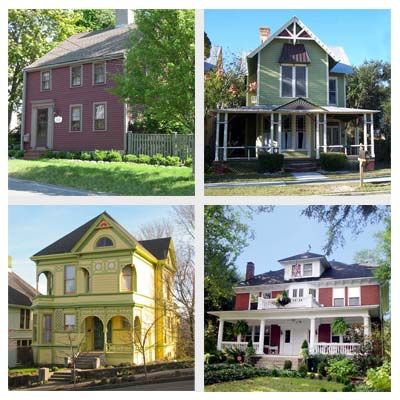
For the fourth year in a row, we’ve tracked down North America’s most timeless neighborhoods—places where lovingly crafted old houses have extraordinary pasts and unarguably promising futures. With help from our friends at Portland, Oregon-based PreservationDirectory.com—who distributed our nomination forms to more than 14,000 historical societies, neighborhood groups, and preservation nonprofits—we’ve assembled our biggest-ever list of off-the-beaten-path places that are worth eyeing for a great old home.
Here are our choices for towns and cities where you can easily live out your golden years in comfort and old-house style.
South Historic District, Palatka, Florida
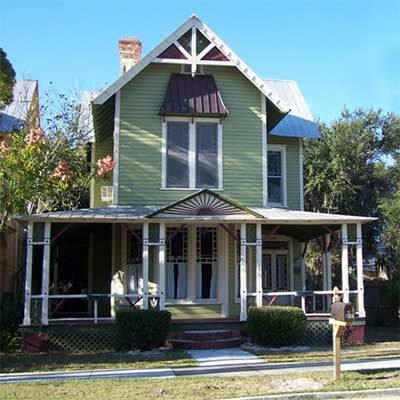
Once known as the “Gem of the St. Johns River,” this north-state city of 11,000 people was Florida’s original tourist destination. After a devastating fire in 1884, the farm town was swiftly rebuilt into a travelers’ hot spot, with eight first-class resorts, including the still existing James Hotel. Among the personalities who kicked back here: Jimmy Stewart, Gary Cooper, Babe Ruth, Teddy Roosevelt, Thomas Edison, and Harriet Beecher Stowe. The city still thrives today, with many young families, students at the Florida School for the Arts and St. Johns River State College, and, of course, retirees drawn by the welcoming weather (and a municipal golf course designed in 1925 by links lord Donald Ross). “It’s very Southern,” says Roberta Correa, president of the Palatka Southside Historic Neighborhood Association. “People are friendly, and the homes are quaint.”
The Houses
Palatka’s most desired houses line the gaslit streets of the South Historic District. Formerly known as “The Hammock,” this neighborhood below the downtown business district has long been one of Palatka’s most affluent. House styles include Colonial Revival, Greek Revival, Stick, Queen Anne, Folk Victorian, and Craftsman bungalows (including several Sears kit homes). A large, fully restored house with a river view can command $500,000. Smaller options needing TLC can go for as little as $60,000.
Why Buy Here?
The Southside Historic Neighborhood Association has a program that grants eligible homeowners up to $20,000 toward exterior restorations within the Historic District. The town’s Main Street revitalization campaign offers grants to new and existing businesses, meaning new jobs and amenities for residents and a boost to the real estate market.
Among the best for: The South, Bargains, Fixer-Uppers, College Towns, Waterfront, Retirees, Cottages & Bungalows, Victorians
Augusta, Kentucky
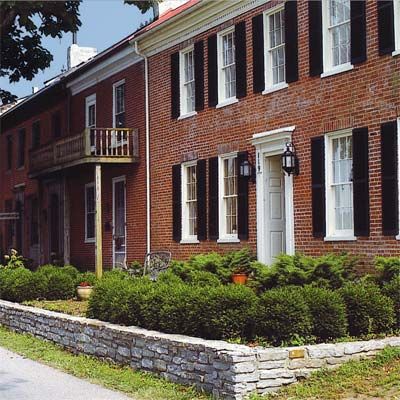
While Augusta has its share of antique shops and pubs, as well as top-notch restaurants that draw gourmands from all over the Bluegrass State, the most pleasurable thing to do may be to sit on a Riverside Drive bench and watch the Jenny Ann ferry glide back and forth across the Ohio River, as it has since 1798. Aside from pretty vistas, this city of 1,300 is known as the former home of “Mambo Italiano” singer Rosemary Clooney—whose house has been converted into a museum—and her dashing nephew, George, who attended Augusta Independent High School. “George’s parents still live here,” says Doug Padgett, Augusta’s director of tourism, “but when he comes back into town, he’s pretty discreet about it.”
The Houses
Riverside Drive is lined with stately 19th-century brick rowhouses built for the old town’s river merchants, who transported tobacco, livestock, and wine. Today, several small wineries call this part of Kentucky home. Both townhouses and detached houses here run from $250,000 to $400,000—the view makes them worth every penny—but more affordable houses can be found along Second and Fourth streets, where we spotted a completely renovated four-bedroom Queen Anne for $185,000.
Why Buy Here?
“This town hasn’t changed for a long time,” says Padgett. “You can still see the remnants of the good old days—the small mom-and-pop stores and the quiet streets lined with shade trees.” In recent years, Padgett has seen both commuters and retirees from Cincinnati, about 42 miles away, move here for the peace and quiet, and for the opportunity to virtually time travel to a simpler way of life.
Among the best for: The South, Waterfront, Retirees, Family Friendly, Victorians, Rowhouses, Walkability
Ipswich, Massachusetts
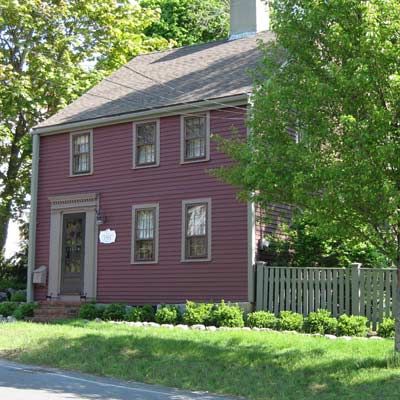
Some 30 miles northeast of Boston is the beachfront town of Ipswich, known to have inspired Theodore Wendel and other American Impressionist painters with its rolling hills, salt marshes, open farmlands, and classic maritime scenery. Ipswich is now home to almost 14,000 residents, including retirees, families, and everyone from working-class fishermen to well-known writers and artists. Environmentally focused preservation societies take great care to protect the town’s natural resources, while locals and visitors enjoy horseback riding on country trails, canoeing and kayaking on the Ipswich River, cavorting on Crane Beach’s white sands, and, of course, feasting on the famous Ipswich clams. Jean Moss, who conducts historic-home tours here, says, “I’ve never lived in a place where people loved their town so much.”
The Houses
Of the 180 historic houses here, 58 were built before 1725, making Ipswich the home of more First Period houses than any other U.S. community. Typically family owned and rarely found on the market, these early structures are mainly Postmedieval English timberframe dwellings featuring saltbox rearward extensions. Queen Anne and Italianate homes built around the turn of the 19th century are also here, and tend to go for around $600,000. On the lower end, a 3-bedroom 1928 Colonial Revival in need of gut renovation—and a hike from the town center—is listed for $169,900.
Why Buy Here?
You can live near the beach as a one-car family! Ipswich is one of only a few Boston-area seaside towns with its own train station, walkable from the town center.
Among the best for: The Northeast, Waterfront, Retirees, Family Friendly, Small Towns, Outdoor Activities, History Happened Here, Easy Commute, Walkability
Heritage Hill, Grand Rapids, Michigan
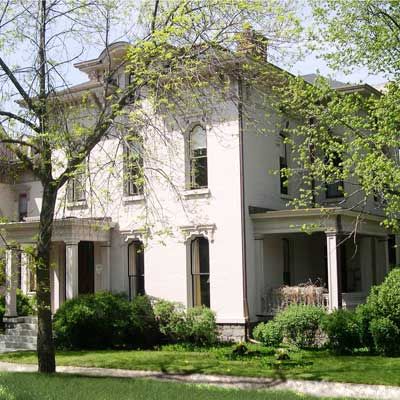
This neighborhood is a mecca for people who love historic American architecture. Not only are the homes storied, the fact that they stand is significant to preservation societies across the U.S. Urban-renewal plans for Grand Rapids during the 1960s had doomed this treasure trove of old houses, but the community fought to protect them. In winning the landmark case, members of the Heritage Hill Association set a precedent: Federal planning agencies are now required to consider their projects’ effects on historic properties.
Surrounded by five urban colleges (including Grand Valley State and Kendall College of Art and Design), Heritage Hill is a cultural center, flourishing with artists, philanthropists, and restaurants. Manicured gardens are celebrated here, especially in May, when a public tour offers owners a chance to show off their homes and horticultural skills. Heritage Hill is diverse, with college students, singles, couples, and families from all backgrounds.
The Houses
The 1,300 homes here include some dating back to as early as 1844, and a remarkable array of styles is represented. You’ll see everything from Italianate and Chateauesque houses to later Tudor Revivals; there’s also a wealth of Greek and Colonial Revivals, Queen Annes, and even a Frank Lloyd Wright Prairie-style home. TLC-craving mansions may sell for around $200,000, but if you seek something more turnkey, you could find a loved three-bedroom 1886 Folk Victorian with Eastlake details for around $170,000.
Why Buy Here?
Though short sales and foreclosures haven’t hit Grand Rapids (long the center of the office-furniture industry) as they have Detroit and other automotive cities, the down market hasn’t overlooked Heritage Hill. Today, you can grab the former castle of a lumber baron or wealthy judge—and walk from home to work in the city’s center—for what amounts to pocket change in other places.
Among the best for: The Midwest, Bargains, Fixer-Uppers, College Towns, Retirees, Singles, City Living, Victorians, Gardening, Easy Commute, Walkability
Prospect Park, Minneapolis, Minnesota
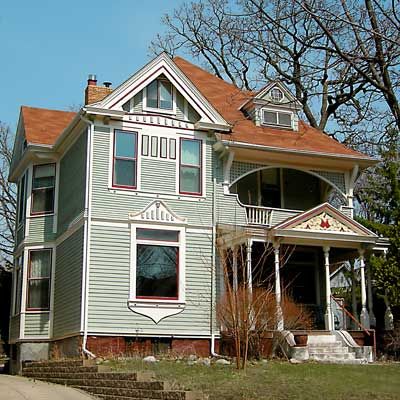
House hunters and residents alike delight in Prospect Park’s mazelike streets, which are lined with trees planted nearly a century ago and homeowners’ pristine gardens. “In Minnesota, we’re serious about our gardens, and in Prospect Park you can ratchet that up quite a bit,” says Joe Ring, longtime resident and historic preservation committee chair for the Prospect Park East River Road Improvement Association. Sandwiched between the University of Minnesota campus and the border of twin (and rival) city St. Paul, this neighborhood has loads of character—and characters. “People here have an exceedingly unique mentality,” Ring says of a community that celebrates its political and economic diversity. “If you want a debate,” he adds, “come here.”
The Houses
Of the nearly 800 dwellings, 92 percent are considered contributors to Prospect Park’s historic integrity. Nineteenth-century Stick Victorians sit next to mid-20th-century bungalows, and most feature original architectural elements. “Residents here have been good stewards,” Ring says. It’s common to find a fully restored 2,000-square-foot home built around the turn of the 20th century for less than $400,000. Bargain hunters may find deals as low as $150,000 for a 1,200- to 1,500-square-foot house in need of updates.
Why Buy Here?
Bargain homes come on the market regularly in Prospect Park, as the neighborhood’s generations cycle, but you’ll rarely find one in disrepair. Loads of century-old neighborhood pride mean you can buy a house that’s been maintained since the day it was built.
Among the best for: The Midwest, College Towns, Retirees, Victorians, Gardening, Easy Commute
Vicksburg, Mississippi
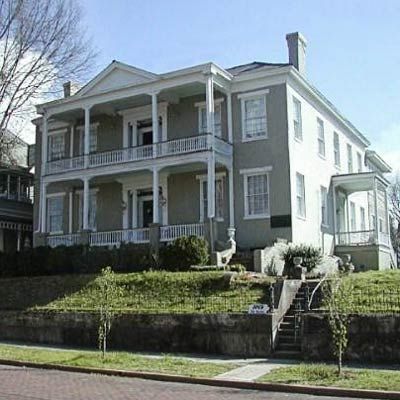
Vicksburg does indeed hold a place in Civil War history. You may recall from high-school history class that bloody 47-day siege, led by Ulysses S. Grant, who took control of the Mississippi River, splitting the Confederacy in two. This now-tranquil river city of 26,000, set on a bluff overlooking the Mississippi and Yazoo rivers, attracts almost a million battlefield visitors annually. It is also luring retirees and second-home buyers from as far away as Colorado and California. “People are figuring out that they can buy a plantation house with river views for about the same price as a regular old house elsewhere,” says Realtor Pam Powers. Besides the architectural offerings, they’re won over by Vicksburg’s riverfront casinos and southern-style restaurants, as well as the scenic beauty and spirit. “New Orleans is The Big Easy,” Powers says. “I think of Vicksburg as The Little Easy—with many shared influences.”
The Houses
While columned antebellum homes, such as Greek Revival, are the most cherished houses here, you’ll also find Federal-style, Italianate, Queen Anne, Foursquare, and Craftsman houses. Most were constructed between 1830 and 1920 and surround the downtown area. We found a seven-bedroom 1841 Greek Revival plantation house on the Yazoo River listed for $365,000, and a restored 1870s Queen Anne—with an awesome double-gallery porch on the back—for $149,000. Many residents here are fiercely proud of their backyard and sideyard gardens, which range from wild and rambling to more formal English gardens.
Why Buy Here?
Vicksburg’s affordable manses and stunning views of the Mississippi are reason enough to give it a look. With so many visitors coming to experience Vicksburg’s Civil War history each year, this is the perfect place to live out your bed-and-breakfast dream.
Among the best for: The South, Bargains, Waterfront, Retirees, Family Friendly, Victorians, Gardening, History Happened Here
Field Club Historic District, Omaha, Nebraska
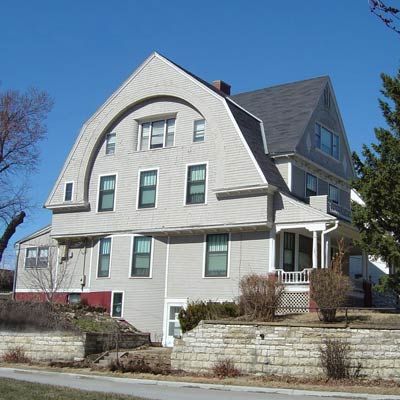
This old neighborhood southwest of downtown got its name from the Field Club of Omaha, a smashing-good-time country club that opened here in 1898. Many residents of this shade-tree-studded area are longtime members, and walk over to swim laps or hit some golf balls. Those who forego the annual dues find plenty of free recreational opportunities at nearby Hanscom Park, Omaha’s oldest green space. Joiners or independents, Field Club hangs on to people. “It’s the kind of neighborhood where several generations of the same family might live,” says Jill Nienaber, president of the Field Club Homeowners League, a feisty group that’s protected these green streets and the homes on them from deterioration and—through the many parades and festivals it sponsors—the residents from boredom since 1947.
The Houses
The oldest properties are ornate and cavernous Queen Annes built in the late 19th century for the city’s wealthiest residents, and overlooking Hanscom Park. Most construction, however, took place between 1900 and 1920, and architect-designed homes from that period are of the Foursquare, Colonial Revival, Mission, and Tudor styles, among others. Prices start at around $125,000 for older homes in need of repair, with the average price about $200,000.
Why Buy Here?
Thanks to the recent completion of a mixed-use development a few blocks north of the neighborhood, a slew of new restaurants, shops, and pubs, as well as a grocery store and movie theater, have opened within walking distance of Field Club. A well-traveled area bike trail lets you pedal your way there in less than 10 minutes.
Among the best for: The Midwest, Retirees, Family Friendly, Singles, First-Time Buyers, Victorians, Easy Commute, Walkability, Outdoor Activities
Powning’s Addition, Reno, Nevada

“It’s cuter than hell,” Jack Hursh says of the early-20th-century bungalow he owns here in Powning’s Addition. In fact, there are lots of cute houses to go around in this historic neighborhood just west of downtown Reno. Founded in 1888 by C.C. Powning, a transplant from Wisconsin, the area was once popular among turn of-the-century Italian-American immigrants, who took full advantage of the spacious lots the houses offered, planting them with vegetable gardens and the occasional small vineyard. After a rough patch in the 1970s and ’80s, young professionals and retirees starting moving here, and they worked together to fix up its long-neglected properties. “It’s pretty quaint now,” says Jack. “And there’s something to living in a smaller house—and not having a long commute to Reno.”
The Houses
Most were built between the late 1880s and 1920. Queen Annes and brick Craftsman bungalows dominate the mix. Jack bought his bungalow—with its original mahogany woodwork—for just $77,000, and all he really had to do was update the house’s only bathroom.
Why Buy Here?
Hundred-year-old homes for less than $100,000 bucks? That’s good enough for us.
Among the best for: West and Northwest, Cottages and Bungalows, Victorians, Waterfront, College Towns, Singles, Retirees, Easy Commute, Walkability, Outdoor Activities, Gardeners
Lambertville, New Jersey
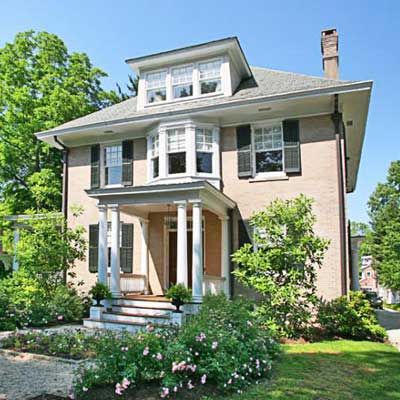
Everything from hairpins to toilets was once manufactured in tiny Lambertville. But the former industrial center has changed: This Delaware River enclave is now home to nearly 5,000 artists, writers, retirees, shop owners, and big-city professionals (who brave 45- or 90-minute commutes to Philadelphia or Manhattan, respectively). What Lambertville lacks in population it makes up for in house-reviving spirit. It’s a hotbed for carpenters, masons, architects, antiques dealers, and other home-restoration pros, and a destination for those embarking on the endearingly prickly journey of rehabbing an old home. Mornings, you can stroll the Union Street antiques shops or the nearby renowned Golden Nugget Antique Market.
The Houses
A history dating back to 1705 means Lambertville has accumulated a wide range of architectural styles. “Every house is unique,” says Holly Havens, a real estate agent who settled in Lambertville in 1995. The town center offers early-19th-century Federal to Greek Revival and later Italian Villa, Gothic Revival, English Cottage, French Second Empire, and Queen Anne homes, as well as 1850s rowhouses built for Irish canal workers. Craftsman bungalows and vernacular cottages dot outlying hills. Those game for heavy lifting can grab a storied house with good bones for a song. We found a two-bedroom Colonial rowhouse dating to the 1700s for $168,000 (yep, it needs work).
Why Buy Here?
If you’re looking for a small—but growing—artisan-friendly town, or a commutable rural pocket, Lambertville is your place. “It’s Oz,” says Havens. “We’re so tucked away.” And did we mention the deals?
Among the best for: The Northeast, Bargains, Waterfront, Retirees, Singles, First-Time Buyers, Small Towns, Outdoor Activities, Walkability
Silver City, New Mexico

Retired professors and young academics alike flock to this former metal-mining boomtown nestled in the foothills of the Pinos Altos Mountains. Part of the draw may be its Old West roots—a former Apache campsite, Billy the Kid is said to have spent his formative years here in the state’s southwestern corner. But today, as home to Western New Mexico University and a burgeoning arts scene, and bordering 3.3 million acres of untamed national forest, this community of about 10,000 is a contender for anyone seeking low-key living. “It’s a laid-back lifestyle—people go hiking, biking, birding,” says real estate agent Colleen Stinar. “It’s like Santa Fe, without the pretentiousness.” Looking to explore the local terrain? Nature lovers will find an active Audubon chapter and native plant society, while townies inclined to cultural events enjoy art gallery walks, blues and jazz concerts, and experimental theater performances.
The Houses
Clustered around the University and in the city’s other five historic districts is an eclectic mix of brick Queen Anne cottages, other Victorian-era homes, Territorial adobes, and bungalows with southwestern flair (some with adobe construction). Prices range from $120,000 to $250,000, depending on size and condition. We recently spotted a restored smaller bungalow—a good fit for a first-time buyer or young family—for $85,500.
Why Buy Here?
New Mexico’s property taxes are among the lowest in the country, and Silver City’s housing market is affordable compared with other residential oases in this state. Dollars also go far here in terms of the quality of life—the cost of living is somewhat lower than the national average.
Among the best for: The Southwest, Fixer-Uppers, College Towns, Retirees, Family Friendly, First-Time Buyers, Victorians, Outdoor Activities
Montford Historic District, Asheville, North Carolina
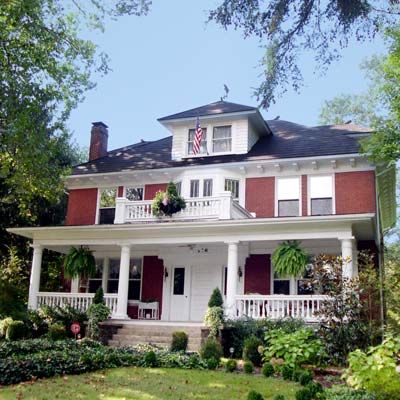
Founded in 1893, Asheville’s Montford neighborhood has since provided generously to 20th-century American literary lore. Thomas Wolfe was laid to rest here in Riverside Cemetery, but not before compiling his experiences in a 1929 autobiographical novel, Look Homeward, Angel. William Sydney Porter, better known as O. Henry, is also buried here. And, in 1948, Zelda Fitzgerald met her end in a tragic fire at an area mental hospital. Montford, still an arts-focused community, is home today to writers, artists, and musicians (along with students, professionals, and retirees). Residents showcase their talents at May’s annual music and arts festival, and celebrate summer among fireflies at Shakespeare productions staged at a local amphitheater. Heavily wooded, this western North Carolina neighborhood also has a mountain-town feel and access to Class II–V rapids, and the sports that go with them, on a number of nearby rivers, all within an hour’s drive.
The Houses
Most houses in the Montford Historic District date between 1890 and 1925, and styles are eclectic. You’ll find Queen Anne, Colonial Revival, Georgian Revival, Neoclassical, Shingle, and vernacular houses in a wide price range. You can find a modest bungalow needing work for around $100,000, or a grand old mansion fit for a family—or a bed-and-breakfast—for upwards of $1 million.
Why Buy Here?
With an impressive range of home prices, sizes, and styles, this neighborhood has something for everyone. And there’s plenty on the market now, including a three-bedroom 1910 Shingle Style house with original architectural features offered for less than $300,000. All it needs is a little love.
Among the best for: The South, Bargains, College Towns, Retirees, Family Friendly, Outdoor Activities, History Happened Here
Bartlesville, Oklahoma
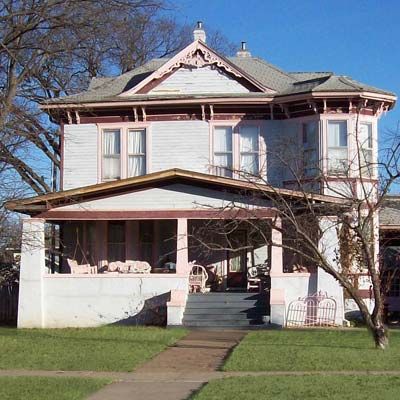
Oil does funny things to a place. Its discovery in 1897 in the Indian Territory near what would become Bartlesville brought oil men from Pennsylvania who got rich, built elaborate homes to compete with one another, and established a town with an ingrained appreciation for arts and architecture that persists today. The barons clustered along South Cherokee Avenue and the streets parallel to either side; their grand houses stand well maintained, just south of the restaurants and shops of downtown. County assessor Todd Mathes and his wife bought a two-and-a-half-story Foursquare here nearly six years ago. “We had four children and then adopted four girls, so our family doubled overnight,” Mathes says. From the family home, it’s a three-block walk to the cultural center that hosts the town’s homegrown symphony and ballet; a block farther sits Price Tower, a 19-story mixed-use building and one of only two skyscrapers Frank Lloyd Wright ever built.
The Houses
Starting at about $100,000, you can find Queen Annes, Tudor Revivals, Craftsman-style and a plethora of other bungalows, many of which trade on elements from an eclectic mix of styles.
Why Buy Here?
To sweeten the deal, Oklahoma boasts one of the lowest property-tax rates in the country, and in Bartlesville that means you pay about $1,400 annually on a $100,000 house. “People don’t hate me,” says tax man Mathes. “And they realize the value of good schools and roads.”
Among the best for: The Southwest, Bargains, Retirees, Family Friendly, Cottages & Bungalows, First-Time Buyers, Victorians, Small Towns, Easy Commute, Walkability
Astoria, Oregon
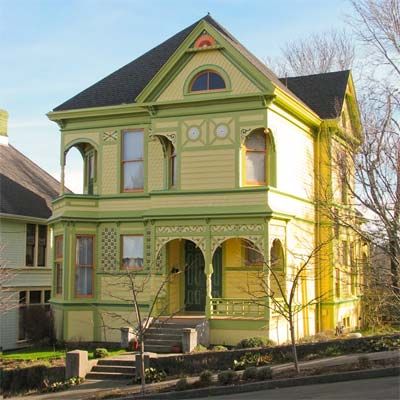
If Astoria’s old-house-lined streets look familiar, do not adjust your screen. This town of 10,000, situated at the mouth of the Columbia River, has provided a backdrop for Hollywood flicks, most notably ’80s cult classic The Goonies. Long before that, Lewis and Clark spent the winter here during their legendary expedition—and by 1811, Astoria was an established fur-trading post, then a fishing, canning, and logging center. Today’s economy has shifted toward tourism, drawn by a 1920s-era downtown and nearby sand and surf. For many locals, boating and salmon fishing are both business and pleasure. “In the summer there are days when it looks like you could hop from boat to boat,” says Regina Willkie, resident and Chamber of Commerce employee.
The Houses
With nearly 70 percent of the town’s housing stock eligible for Historic Landmark status, Colonial Revival and kit-built Craftsman homes tend to be better bargains, selling move-in ready for less than $200,000. Harder to come by are hilltop Queen Annes and Italianate “painted ladies,” such as one 5,000-plus-square-foot gal that carries a $549,000 price tag but boasts a Columbia River panorama stretching from Tongue Point to the Astoria Bridge.
Why Buy Here?
This is Astoria’s bicentennial year, making it an ideal time to check out the place. Property values have remained strong with the recent influx of retirees, and architectural preservation is a priority here. In fact, the local community college offers an associate’s degree in historic preservation. Yep, you can fix up an old home and improve your resume at the same time.
Among the best for: The West & Northwest, Waterfront, Retirees, Family Friendly, Cottages & Bungalows, Victorians, Outdoor Activities, History Happened Here
Historic Bethlehem, Bethlehem, Pennsylvania
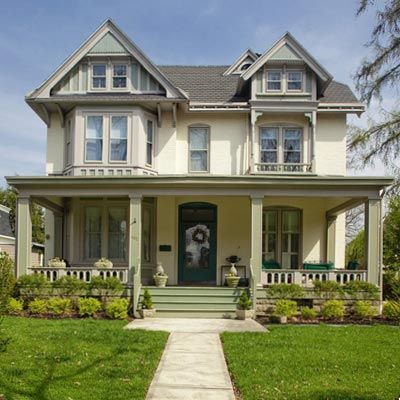
Home to America’s second-largest steel producer until Bethlehem Steel closed, in 2003, this city of 72,000 is about 70 miles north of Philadelphia and 81 miles west of New York City. Many retired millworkers still live here, these days next door to 30- and 40-something professionals who’ve chosen Bethlehem for its almost-sane metropolis commute. Lehigh University and Moravian College are both here, contributing to a thriving historic-district arts scene that includes free concerts, house and garden tours, and monthly art shows inside the glass walls of the town hall rotunda. On Main Street, the Moravian Bookshop, the country’s oldest continuously operating tome seller, stands among well-traveled restaurants and coffeehouses. Historic Bethlehem has a community feel: Neighbors attend town meetings, walk to the single-screen Boyd Theatre for a flick, and catch their dinner at Monocacy Creek, a trout stream off the Lehigh River.
The Houses
The neighborhood is stocked with two-and-a-half- and three-story Italianates, Queen Annes, Second Empires, and Gothic Revivals built near the turn of the 20th century. Got elbow grease? One of these ornate Victorians can be had starting at —300,000. A fully restored one is more likely to ring up for —600,000 or more. Historic Bethlehem also has rowhouses in the —175,000 range, and wherever you stroll, history abounds. As local Realtor Barbara Fraust says, “You can traverse centuries in eight blocks.”
Why Buy Here?
The Keystone State is known for its affordable living, for families and empty nesters alike. Retiree alert: You won’t pay state tax on pension income in good old Pennsylvania.
Among the best for: The Northeast, Waterfront, College Towns, Retirees, Family Friendly, Victorians, Walkability
Melrose Heights Historic District, Columbia, South Carolina
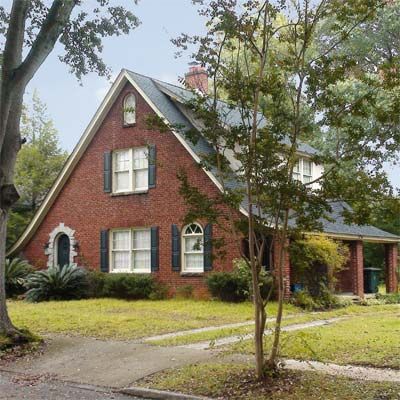
The words “unsung gem” came to mind when we discovered Columbia’s Melrose Heights. Though it’s less than 2 miles from both the state capital building and the University of South Carolina, it manages a low profile. But with family amenities including affordable homes, some of Columbia’s best public schools, and a five-minute commute to downtown, it’s a neighborhood to know. On any given Saturday, joggers and bicyclists share the shady streets, and dads play fetch with dogs—or kids—on the grassy lawns. “We didn’t have to build playground equipment,” says John Sherrer, an eight-year resident and father of two grade-schoolers. “It was there in Melrose Park.” In 2003, the community voted in favor of the neighborhood, founded in 1900, being designated an architectural conservation district. The result: All residents take pride in their kept gardens and eclectic homes, creating block upon block of curb appeal.
The Houses
Tudor Revival, Craftsman, Colonial Revival, and Prairie styles abound on these orderly streets, with vernacular homes, ’40s brick cottages, and kit houses, like those from Sears and Aladdin, making a good showing. We found a renovated four-bedroom 1936 Tudor Revival in the neighborhood’s heart for $355,000; smaller or less turnkey options can be snagged for under $150,000.
Why Buy Here?
Melrose Heights has reaped benefits from its historic preservation efforts without losing accessibility. “It is not an ‘Old South’ Greek Revival neighborhood with enormous, unattainable houses,” says city planner Jerre Threatt. “It is an intact early-1900s suburban neighborhood with a diverse offering of architectural styles at affordable prices.”
Among the best for: The South, Bargains, College Towns, Family Friendly, Cottages & Bungalows, City Living, First-Time Buyers, Gardening, Easy Commute, Walkability
Hardwick, Vermont
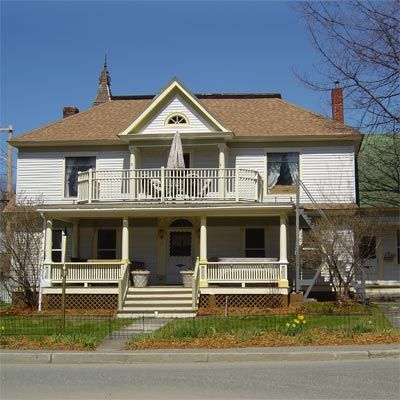
Don’t expect to find a food court or Filet-O-Fish in Hardwick anytime soon. “There’s no mall and no McDonald’s,” Andrew Meyer says of his hometown. A 19th-century granite-mining boomtown that went bust, then slogged through the 20th century, Hardwick is back because of food of the not-so-fast sort. Meyer, co-owner of Vermont Soy, grew up on a farm in this town of 3,000 in the state’s northern third. After a stint in Washington as an agricultural aide, he came home, planted beans, and helped turn the town into a cocoon of what foodies call “locavorism.” He founded the Center for an Agricultural Economy, which works with farmers, communities, and agribusiness to develop healthy food. The cooperative kitchens of the Hardwick-based Vermont Food Venture Center assist fledgling food-processing companies, and Claire’s restaurant serves eats from nearby fields. This community of young entrepreneurs, farming families, and supportive elders proves it: Small business can produce significant economic growth.
The Houses
Many were built at the turn of the 20th century, between the granite industry’s acceleration and crash. Folk Victorians built by mining bosses sport Italianate, Queen Anne, and Second Empire features, and tend to sell in the $125,000 to $200,000 range, according to Realtor Ron Sanville. Classic Capes and Colonial Revivals are common, too, and can often be snagged for less than $125,000.
Why Buy Here?
Hardwick’s Main Street was home to a slew of watering holes in the depressed days. Today, its diverse array of businesses includes a clothing boutique, a bakery, a jewelry shop, a bookstore, and a co-op of micro-businesses, from acupuncturists to accountants. With agricultural jobs growing fast in Hardwick, if you’ve ever considered running off to rural America, this seems one prosperous place to park your tractor.
Among the best for: The Northeast, Retirees, Family Friendly, Singles, First-Time Buyers, Small Towns, Gardening, Easy Commute
Mountain View, Roanoke, Virginia
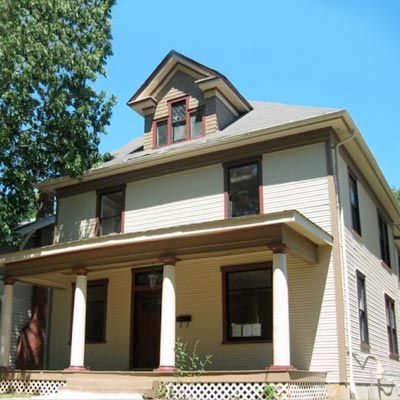
A few minutes’ drive southwest from downtown Roanoke, picturesque Mountain View is perfectly located in every respect: It’s a cinch of a commute and enjoys stunning panoramas of the Blue Ridge Mountains and the Roanoke River. It’s no wonder residents of this neighborhood spend so much time outdoors. Retirees and families enjoy soaking up the scenery along the area’s Roanoke River Greenway, a 5.5-mile paved path perfect for walking, running, and bicycling. When wintry weather moves in, the arty locals flock to the city’s galleries or mountainside wineries, or enroll in dance, music, and other “personal enrichment” classes at the Fishburn Mansion, a National Historic Landmark and community-life hub. Factor in the forty or so classic old homes—built between 1884 and 1924 to house an onslaught of railroad-industry execs—that line Mountain View’s streets, and you may just have the ultimate Roanoke Valley settling spot.
The Houses
The neighborhood’s housing stock consists predominantly of two-story American Foursquares, along with occasional Queen Annes and bungalows. A renovation movement is on the upswing, and prices and conditions run the gamut. If you’re low on cash and high on motivation, a two-story handyman special can be scored for about $35,000. Higher-end options run between $100,000 and $200,000, and are often fully renovated with preserved original details, such as pocket doors and ceramic tile.
Why Buy Here?
You’ll get a much-needed tax break. In an effort to keep Mountain View’s revitalization clipping along, preservation societies, such as the Virginia Landmarks Register, have secured significant tax exemptions for home buyers who restore historic structures—the more you sink in, the more you save.
Among the best for: The South, Bargains, Fixer-Uppers, Waterfront, Retirees, Family Friendly, Outdoor Activities, Easy Commute
Martinsburg, West Virginia
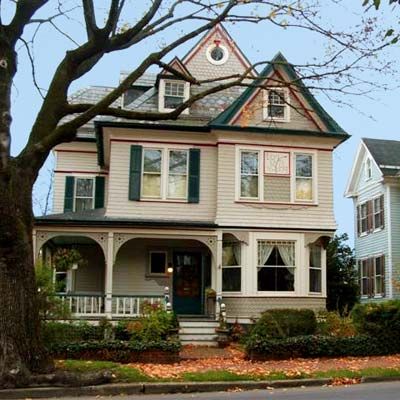
“You gave me one quarter too many,” Ed Trout beckons to a customer who’s hightailing it out of his King Street Coffee & Tobacco Emporium after buying a cup of joe. It’s a shining example of how people seem to look out for one another in Martinsburg, a city of 17,000 with decidedly small-town tendencies. Trout was born and raised in Martinsburg, where he spent his childhood hooking catfish and walleye on the nearby Potomac River. He went away for college, but came back in the early 1990s to open his store in one of Martinsburg’s historic downtown commercial buildings. Those storefronts also house Italian restaurants, mom-and-pop drug stores, and a full-fledged chocolate factory. Trout says his coffee-and-cigar shop is emblematic of Martinsburg’s convivial atmosphere. “It goes back to the old general store days,” he says, “where you’d show up each day, say hi to your friends—and just tell your stories.”
The Houses
Martinsburg is home to ten National Register Historic Districts, with every American house style imaginable—from Federal to Foursquare. More opulent houses are on King and Queen streets, where 19th-century industrialists who made their fortunes in the textiles mills built large Queen Anne, Georgian Revival, and Colonial Revival mansions. Prices for starter homes begin at less than $100K, but a restored four-bedroom Queen Anne with a huge yard for gardening can be had for $250,000.
Why Buy Here?
This self-proclaimed “Gateway to the Shenandoah Valley” has grown in popularity over the years, as commuters from Washington, D.C., and Baltimore move here for a relaxing change of pace (despite the two-hour journey). A new Macy’s distribution center, now under construction, will offer more than a thousand jobs.
Among the best for: The South, Bargains, Fixer-Uppers, Retirees, Singles, First-Time Buyers, Victorians, Small Towns, Gardening
The Washburn-Lawrence Neighborhood, Sturgeon Bay, Wisconsin
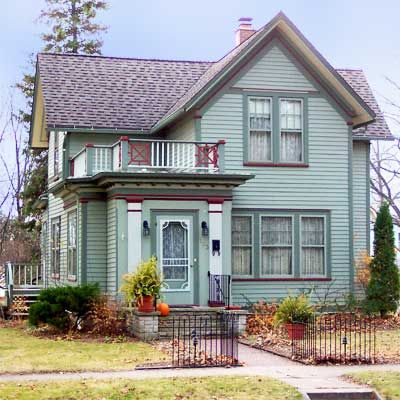
The historic Washburn-Lawrence neighborhood is in the middle of Wisconsin’s picturesque Door Peninsula, between Lake Michigan and Green Bay. It’s home to about 420 of Sturgeon Bay’s 9,700 residents. Whether they’re gardeners, boaters, or cross-country skiers, retired-age folks and family types of all ages are attracted to the area’s temperate climate; the lake and bay keep summers breezy and winters mild. Canopies of mature maples and preserved sidewalks grace the neighborhood’s residential streets, which are home only to domiciles, bed-and-breakfasts, and churches. Homey cafés, art galleries, and the old-time Third Avenue Playhouse sit just two blocks away in Sturgeon Bay’s walkable downtown area.
The Houses
Seventy-one of the neighborhood’s 180 dwellings are historic Italianates, Queen Annes, Classical Revivals, or Craftsmans, most built between 1881 and 1931. Bargain hunters with a yen for reno can find restoration-worthy options—usually in need of roof replacement and foundation work—starting around $100,000.
Why Buy Here?
A tourism hotspot, the peninsula hosts 2.2 million vacationers every year. They join locals in the orchards for apple and cherry picking, and attend tastings at local wineries. If you’ve always wanted to open a specialty shop in a quaint town or turn a historic Queen Anne into a bustling bed-and-breakfast, this may be the place for you.
Among the best for: The Midwest, Waterfront, Retirees, Family Friendly, City Living, Victorians, Gardening, Outdoor Activities, Easy Commute, Walkability
Sheridan, Wyoming
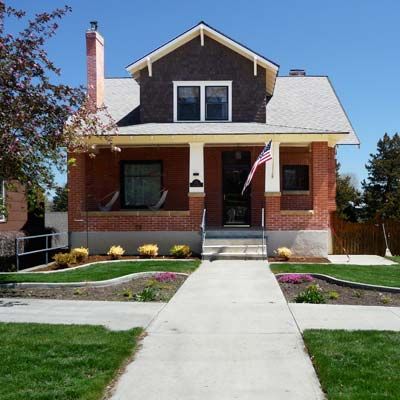
The preserved western storefronts of turn-of-the-century downtown Sheridan (population 17,461) are not for show. While it’s true that Buffalo Bill Cody auditioned acts for his Wild West Show on the landmark Sheridan Inn’s steps, today’s residents, from cowboys to doctors at the Veterans Administration hospital, buy socks at the old J.C. Penney, nails at Sheridan Commercial Company, and reins from King’s Saddlery. The family-owned tack shop, founded in 1961 and famous for its ropes and hand-tooled leather saddles, ships worldwide. “Sheridan is rural Americana at its finest,” says Andy Ayres, co-owner of Lulu’s Cafe, which offers meat and potatoes and tapas. But don’t confuse rural with hick: There are two polo clubs here that draw players from as far away as South America.
The Houses
Most historic homes are in Residence Hill, along South Main, which runs the town’s length, and blocks west. The predominant style is Craftsman, like the 1914 two-story that Rod Fordahl has been fixing up “forever.” When he bought the place 20 years ago, it contained the original claw-foot tub and panel doors. You’ll find the odd Tudor, Queen Anne, or Dutch Colonial; expect to pay from $275,000 for a 3,000-square-foot historic home. “Places have been preserved pretty well,” says Fordahl, whose company, Fry Construction, does remodeling jobs. Once he’s done with a place, and the coal-fired furnace has been replaced, the price might climb to $400,000.
Why Buy Here?
There are no incentives, per se, to fix up an old house in Sheridan, but property taxes are extremely low. You might pay $1,500 a year for a 3,000-square-foot house.
Among the best for: The West & Northwest, Fixer-Uppers, Retirees, Cottages & Bungalows, Small Towns, History Happened Here
Old San Juan, Puerto Rico

It’s said that you need to be either a poet or loco to live in Old San Juan, where Old World charm meets decidedly New World eclecticism. Packed into the winding streets of this fortified Caribbean peninsula are artists, students from three universities, shop owners, café culture knockabouts, lawyers, musicians, millionaires, government employees, and the gobierno himself, who lives in La Fortaleza; built in 1540, it’s the longest-occupied governor’s mansion in the Western Hemisphere. Neighbors chat over café con leche at places like La Bombonera every morning, and a walk on the blue-gray cobblestones, called adoquines, leads past impeccable, colorful Spanish Colonial rowhouses on par with those of Madrid.
The Houses
Restoring a Spanish Colonial, with its 2-foot-thick walls, brick-lined cisterns, and lead-pipe plumbing, is a long, involved process that is strictly overseen by the Instituto de Cultura Puertoriqueña. “They have a say inside and out, down to the hinges,” says Realtor Margarita Gandía, whose mother was one of San Juan’s first Realtors in the 1950s. A shell might go for $300,000. Homes requiring less than a gut-renovation can command $600,000. Finished, properties are worth $1 million or more.
Why Buy Here?
The upside to following strict preservation guidelines is that if the result passes inspection, you’ll pay nothing in property taxes. That status has to be renewed every 10 years, under inspection, which keeps the neighborhood in top form.
Among the best for: The South, Fixer-Uppers, College Towns, Waterfront, Retirees, City Living, Rowhouses, History Happened Here, Easy Commute, Walkability
Saint Andrews, New Brunswick, Canada
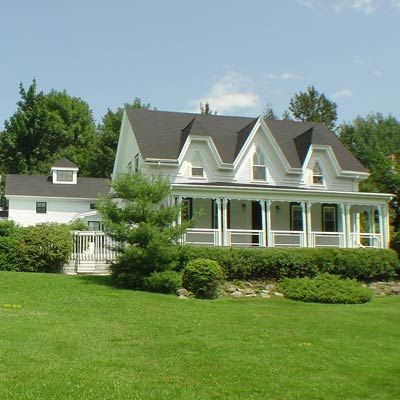
Hailed as the “Jewel in the Crown of New Brunswick,” this coastal village in the Bay of Fundy was one of Canada’s first pre-fab communities: British loyalists escaping persecution in the American colonies settled here in 1783, some transporting their dismantled homes for rebuilding. Late-1800s Canadian and American urbanites turned Saint Andrews into a summer playground, and the majestic Tudor-style Algonquin Hotel, built in 1889, stands today. Current residents find Saint Andrews a social place despite a high-season population of just 4,000: Locals tee off seaside, watch whales on the bay, and stroll the town’s three-mile walking loop. One thing you won’t spy here: big-box or chain stores. Local bylaws prohibit them, so Water Street’s shops are the 1880s originals.
The Houses
You’ll find Cape Cod–style cottages and other early homes put up by Saint Andrews’ first-wave settlers, and center-hall Georgians built in the 1830s. A meticulously restored 1770 Cape will set you back about $360,000; one needing TLC might list at $120,000. Big spenders: Note the $699,000 listing of New Brunswick’s most photographed home, a 1912 French Eclectic farmhouse with a harbor view and thatched-style roof and turret said to emulate explorer Jacques Cartier’s house in Brittany.
Why Buy Here?
Saint Andrews offers more house for your money compared with similar locales farther down the coast, says area real-estate agent Mark Gauley. That may be why it attracts American ex-pats and retirees looking to try out small-town living. It’s a 5-hour car ride to Boston—8 to Montreal—should you need a break from the daily waxing and waning of the 28-foot tides. We expect you won’t.
Among the best for: Canada, Bargains, Fixer-Uppers, Waterfront, Retirees, Small Towns, Outdoor Activities, Walkability
Cranbrook, British Columbia, Canada

Trains put Cranbrook on the map—literally. There was hardly a town to speak of until 1898, when the Canadian Pacific Railway established a station here. Nestled in the Columbia Valley at the foot of the Rockies, Cranbrook became a vital hub for moving coal, ore, lumber, and people through the region. While the railroad—along with the energy sector—remains an important component of the city’s economy today, the trains themselves are the draw for visitors to the city’s Canadian Museum of Rail Travel, chockablock with restored classic railcars and locomotives. Others, including outdoorsy retirees looking for a slow, picturesque pace, come for the snow-capped mountains and parks; this outdoor enthusiast’s dream locale draws many a hiker, biker, climber, and snowshoer. When the city’s 20,000 residents aren’t skating on the city’s ice rinks or fishing in the trout-stocked Idlewild Park lake, they might be at a game supporting the local junior hockey team, the Kootenay Ice.
The Houses
Cranbrook’s period homes are concentrated in the historic Baker Hill neighborhood, which is home to the 1888 Queen Anne–style house built for city founder Colonel James Baker. Also within the neighborhood’s four-block radius are Craftsman bungalows and vernacular-style cottages built for railway and lumber-industry workers; these smaller homes start at $200,000 (USD).
Why Buy Here?
A center for regional industry situated within 60 minutes of four ski areas, Cranbrook offers the advantages of the area’s largest economic engine with the feeling of a small town.
Among the best for: Canada, Retirees, Family Friendly, Cottages & Bungalows, Victorians, Small Towns, Outdoor Activities
St. John’s, Newfoundland and Labrador, Canada
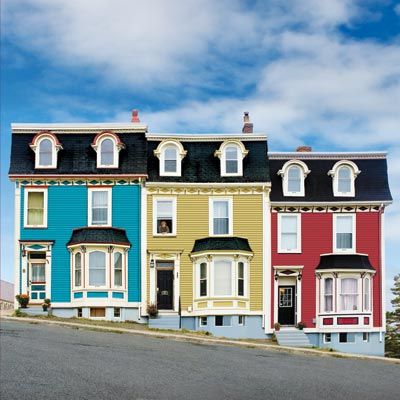
Newfoundland stands apart from Canada, an island with its own time zone, dictionary of idiomatic English, and buoyant cultural pride. The downtown district of capitol city St. John’s, built in a geographical bowl on a protected harbor, is a knot of steep streets where a local politician might live next door to a scruffy musician gigging at the Duke of Duckworth pub. Civic-minded residents boast that downtown St. John’s postal code comprises more artists per capita than any other in Canada, and the Newfoundland narrative looms large in the form of a massive gallery, archive, and cultural center called The Rooms that overlooks the area.
The Houses
“We love our ‘jelly bean’ houses,” says Dale Jarvis of the Heritage Foundation of Newfoundland and Labrador, referring to rows of three-story Second Empire rowhouses downtown. These structures hew to a remarkably consistent style, all built in the wake of an 1892 fire that burned St. John’s to a nub. Uphill, a smattering of Queen Annes and bungalows reside, perched there by merchants hoping to avoid future blazes. Thanks to offshore oil drilling in the last decade, St. John’s dodged the housing bust, but rowhouses with room for improvement can still be had for $250,000; freestanding homes list in the $500,000 range.
Why Buy Here?
You haven’t had this much fun with color since Crayola came into your life. Local company Templeton Paints has introduced a line of historic Newfoundland hues; the jelly-bean colors, embraced by owners of the downtown rowhouses, are eye candy—and instant motivation to put your paintin’ clothes on.
Among the best for: Canada, Fixer-Uppers, Waterfront, Retirees, Family Friendly, Singles, City Living, Victorians, Rowhouses, Easy Commute, Walkability
